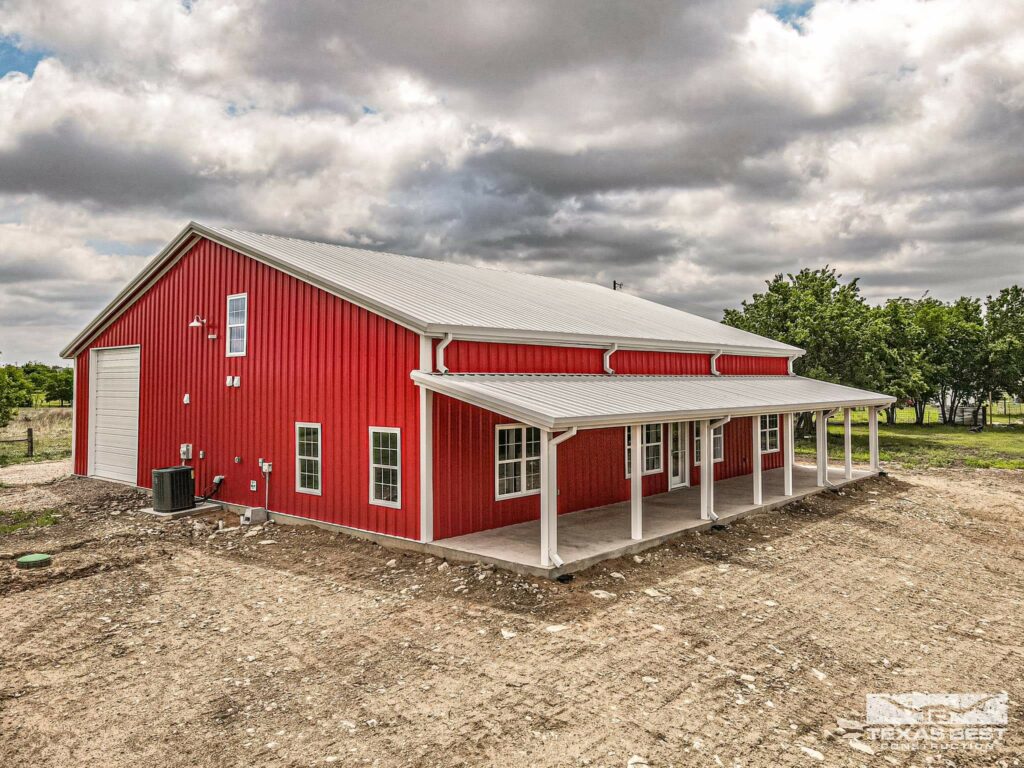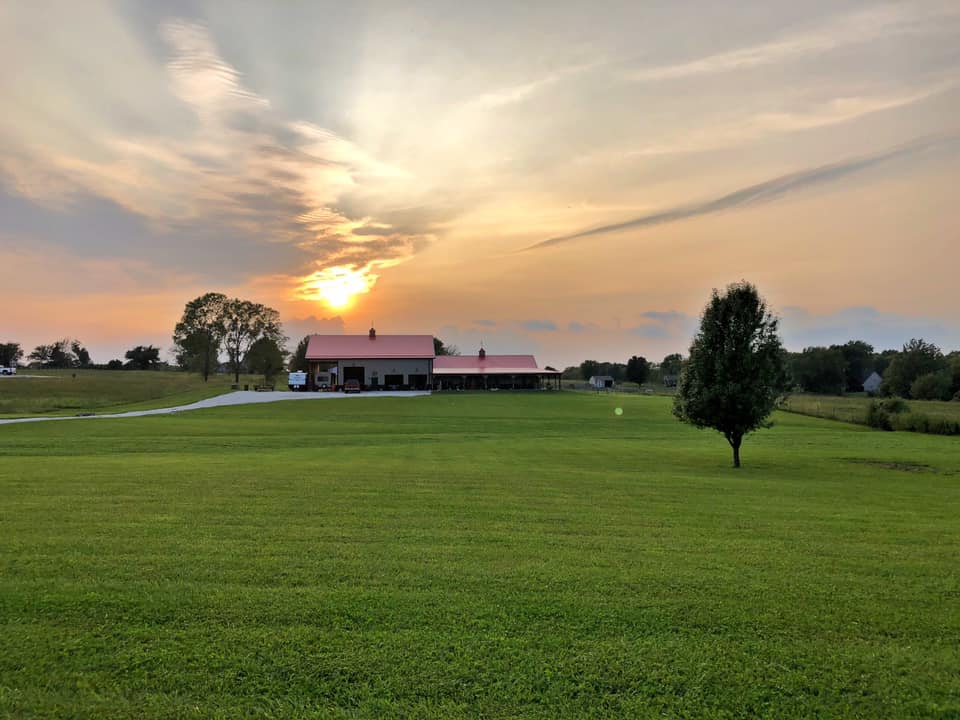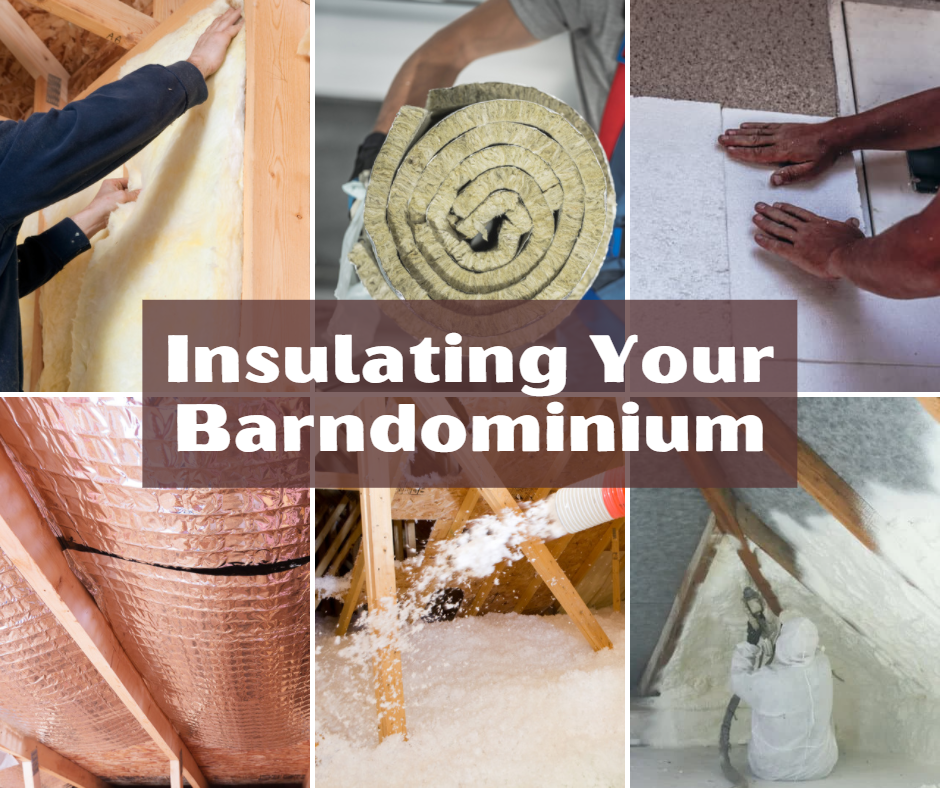
Barndominiums need insulation, as the metal frame, siding, and roof do a poor job of helping you maintain the temperature inside your house. Metal is not a good insulator.
If you want to keep your heating and cooling bills to a minimum, use the following guide to select the right type when insulating your barndominium.
Why Do You Need Insulation for a Barndominium?
Without insulation, the temperature inside your barndominium may closely match the outdoor temperature. As it grows hot, the heat can easily pass through the metal exterior and into your home. As it grows cooler, the lack of insulation allows heat to escape.
Each type of insulation provides a different level of resistance to heat flow. This resistance is listed as the “R-value” of the insulation. A higher R-value provides better temperature control and energy efficiency by blocking the transfer of heat.
The United States Department of Energy recommends insulating your barndominium with an R-value of at least R13 for the walls for a home with wood stud frames built with 2×4 studs. If the home has 2×6 studs, it should have an R-value of at least R19.
Yet, barndominiums are often built with steel frames instead of wood stud frames. You have a deeper wall cavity, which allows you to add more than the recommended insulation in the walls.
If you live in the Southeast, which includes Florida, Georgia, Louisiana, Texas, Oklahoma, Alabama, Mississippi, and Arkansas, the Department of Energy recommends R30 to R60 insulation for the attics. An R-value of R49 to R60 is recommended for the attics in homes in the rest of the country.
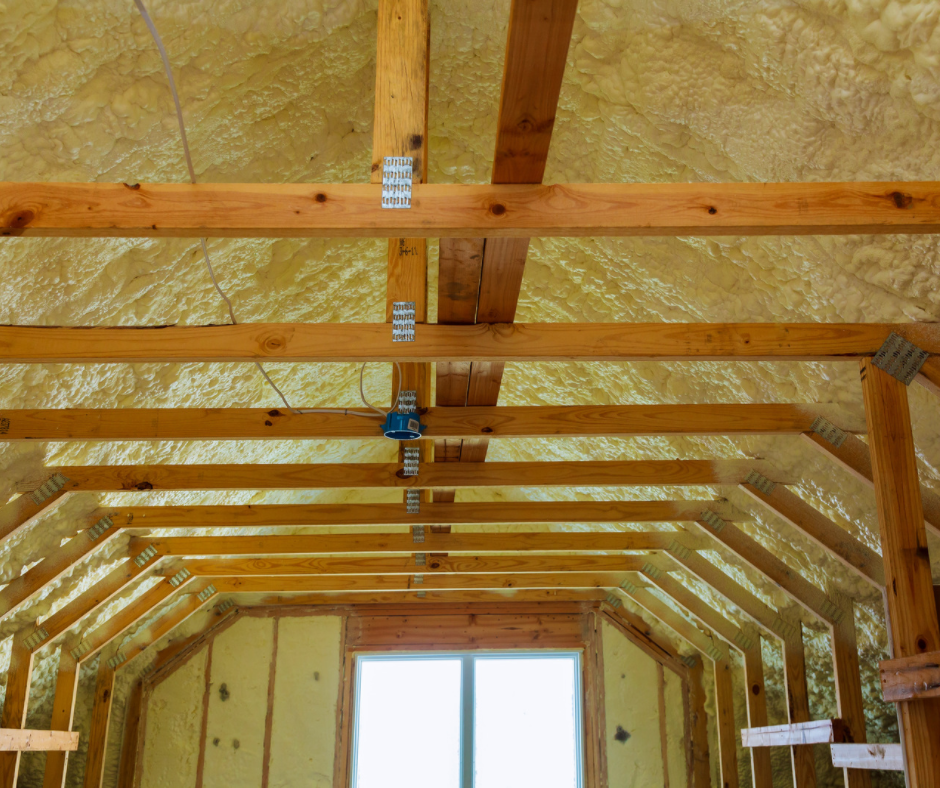
What Type of Insulation Is Best for a Barndominium?
The most common types of insulation include:
- Batt insulation
- Roll insulation
- Foam board insulation
- Radiant barriers
- Blown-in insulation
- Spray foam insulation
Many barndominium designs include a single floor with an exposed ceiling, eliminating the attic. Without an attic, you cannot add blown-in insulation or spray foam. Adding batt or roll insulation is also difficult without finishing the ceiling.
If you plan on leaving the ceiling exposed, consider using foam board or radiant barriers. Foam boards are rigid panels that can be added anywhere with a flat surface. Along with placing them below the roof, foam boards are often used under flooring.
Radiant barriers reflect heat away from your home but do not significantly help keep the heat inside. Radiant barriers tend to work best in the attics and roofing of barndominiums in southern states with mild winters.
While foam board and radiant barriers are the best options for insulating the top of the barndominium, you can choose from any of the other types of insulation for the walls.
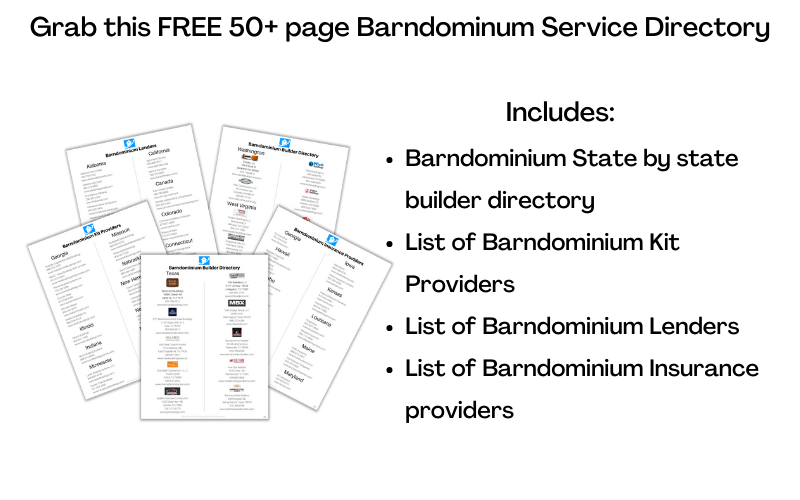
Batt Insulation
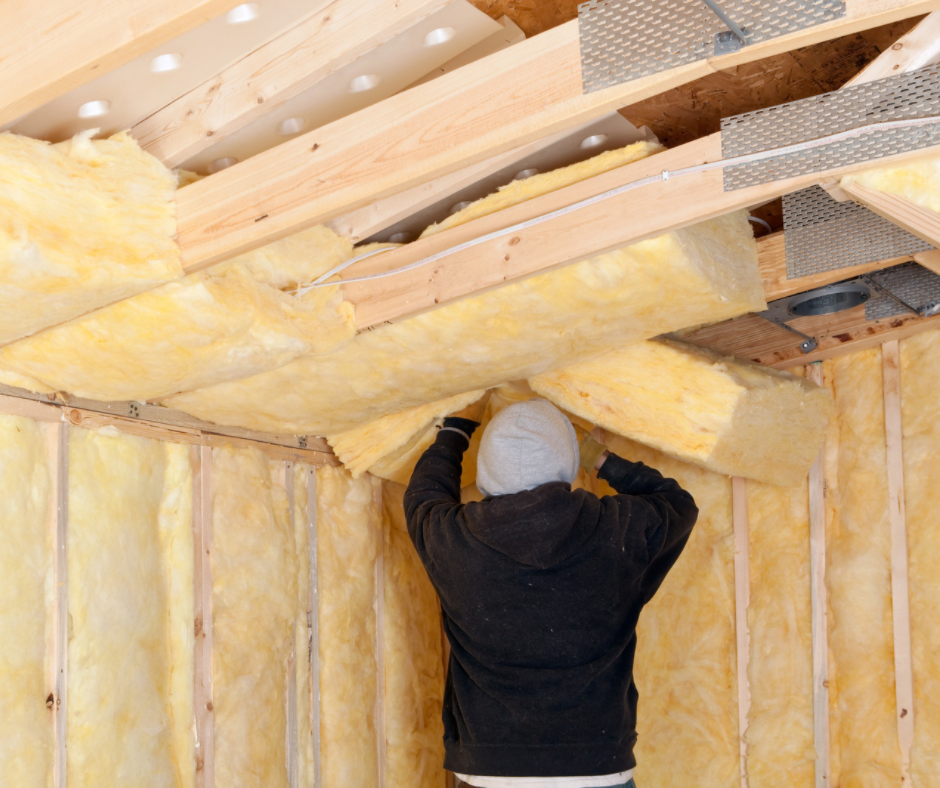
Batt insulation is a type of blanket insulation cut in easy-to-install sizes. Batt insulation is often made with fiberglass material. Fiberglass offers a high insulating value but also requires protective gear during installation to avoid exposure to irritants.
The R-value ranges from R2.9 to R3.8 per inch of thickness. For example, if you want R13 for your walls, you need about four inches of batt insulation.
Each section typically measures 15 to 24 inches wide and 48 or 93 inches long, allowing you to position them between the studs in a wood frame. However, as barndominiums often include metal frames, you have more space between the posts. Batt insulation is also typically nailed in place, which is more of a challenge with metal frames and sheathing.
Roll Insulation

Roll insulation is another type of blanket insulation. However, instead of coming in small sections, it comes in long strips rolled into a bundle.
The length of the roll ranges from 20 to 40 feet. Buying roll insulation often costs less compared to batt insulation, making it the cheapest option. The insulating value is also the same, with a range of R2.9 to R3.8 per inch.
While batt and roll insulation is typically made with fiberglass, you can also find options made with cellulose, natural fibers, or mineral wool.
Choosing roll insulation made from mineral wool may offer slightly superior insulation compared to fiberglass roll insulation. It is also a naturally fire-resistant material.
Foam Board Insulation
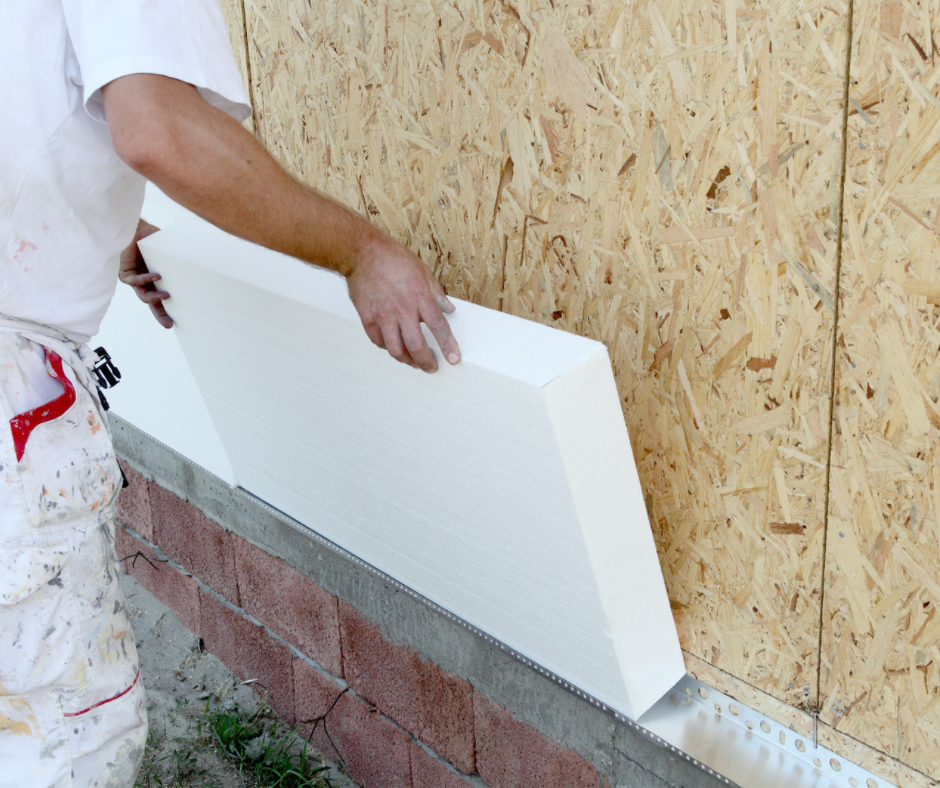
Foam board insulation comes in rigid panels. Some foam board products have an R-value of R5 per inch. The boards are often used for attics and flooring but are also easier to install in the walls of a barndominium compared to blanket insulation. The foam boards are rigid, making them easier to secure against the metal frame.
Foam boards are typically made from polystyrene, polyurethane, or polyisocyanurate. These materials have small air bubbles that help reduce the flow of heat energy.
While foam boards are great at blocking heat, they do not provide the best coverage. Condensation and moisture can still collect in the wall cavities of the barndominium when using foam board.
Radiant Barriers

Radiant barriers are reflective materials that help reflect heat. Unlike other types of insulation, radiant barriers do not include an R-value, as they do not retain heat. Heat can still escape the home. However, you can buy radiant barriers that are attached to foam boards.
As with foam boards, radiant barriers are useful for insulating attics and roofs. Heat typically enters homes through the attic. If you live in the south, a radiant barrier may be more effective at keeping your barndominium cool during the summer. However, radiant barriers are less effective in areas with colder winter temperatures.
Blown-in Insulation
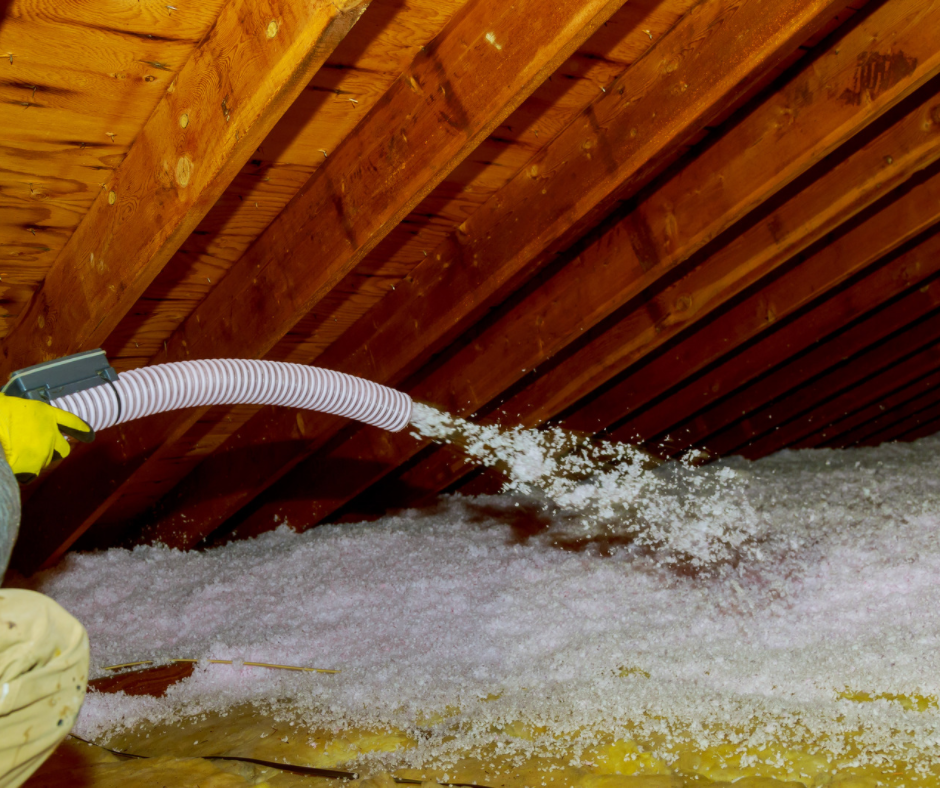
Blown-in insulation, which is also called loose-fill insulation, is blown into the wall cavities of the barndominium. Loose-fill insulation is often used in attics, as it tends to settle over time. If you use loose-fill insulation in the walls, it may settle by up to 50% within 10 years. This means that the upper halves of the walls may not have any insulation in the coming years.
The R-value of blown-in insulation is R2.2 to R3.8 per inch. It is typically made with fiberglass, mineral wool, or cellulose. You can rent a blowing machine and buy material to handle the installation yourself, but most people choose to hire professionals, as adding the insulation requires specific techniques for proper application.
Spray Foam Insulation
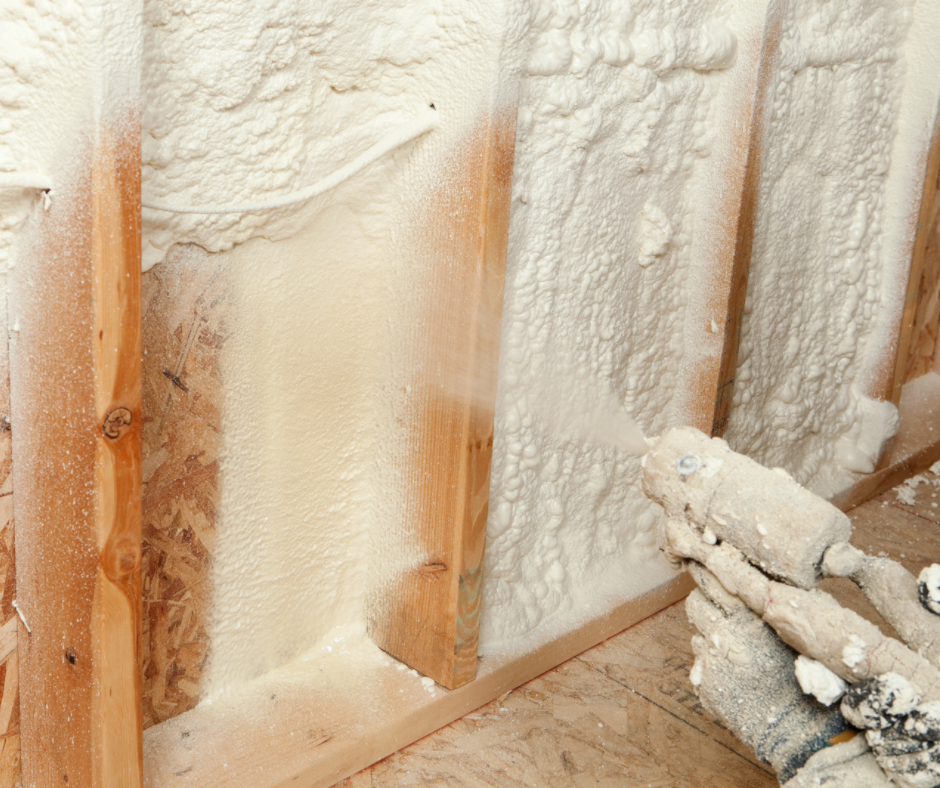
Spray foam insulation is often considered the best option for insulating your barndominium walls. As with blown-in insulation, the foam is sprayed inside the wall cavities. However, instead of settling, the foam expands to cover every inch of the wall cavities.
The R-value of spray foam insulation is R4 to R6.5 per inch. You can also choose from two types of spray foam insulation – open cell and closed cell. Closed-cell foam costs a little more but has a higher insulating value.
Conclusion: Insulating Your Barndominium
Most barndominiums include insulation in the attic, walls, and floors. You can use underfloor heating to heat the lower floor of a barndominium built on a slab foundation. Foam boards or radiant barriers are often added under the roof when building a barndominium with an exposed ceiling.
Batt and roll insulation are the cheapest options for insulating the walls of the barndominium. They are also easier to install but offer less coverage compared to blown-in and spray foam insulation.
Blown-in and spray foam insulation can provide the best coverage and highest insulating value. However, blown-in and spray foam insulation typically require professional installation, which increases the cost.
Deciding which insulation suits your barndominium could be tricky. People go for building a barndominium because it costs less than a traditional home. Choosing the best insulation will also maximize the cost-efficiency of your barndo.
And throughout the process of your build, from drawing your floor plans or designing with software, you will go through lots of stressful yet fun parts.
Other things you may find challenging along the process of building are where to find financing and finding a company that will provide the right insurance coverage for your barndominium.
